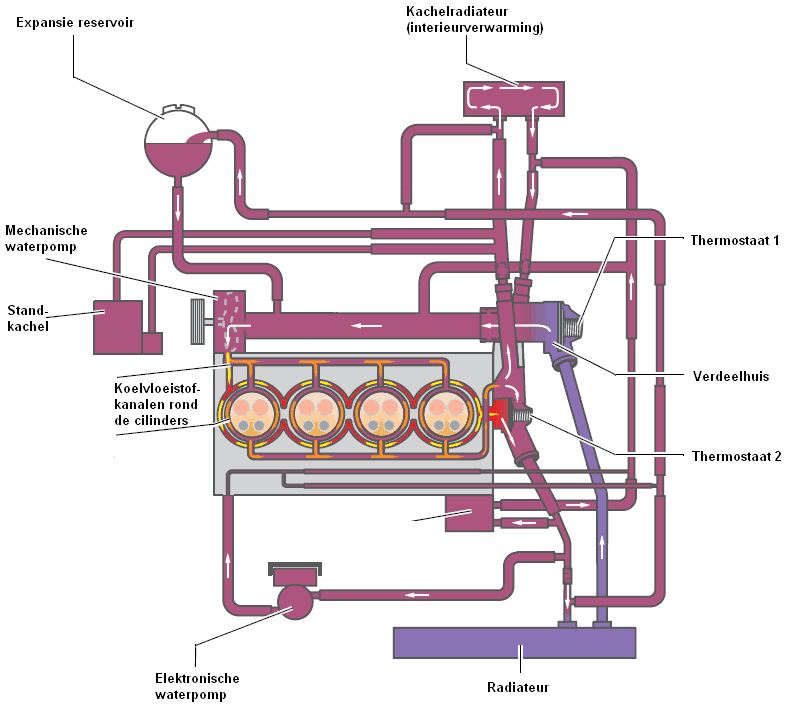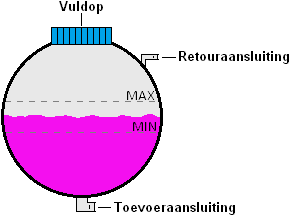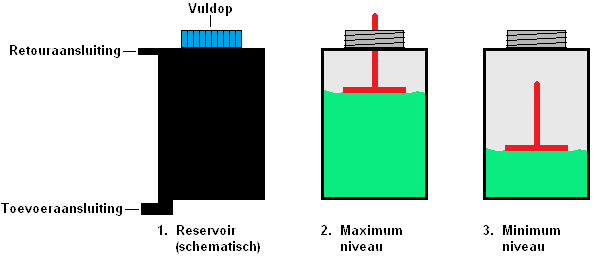Subjects:
- Expansion reservoir
- Different types of expansion tanks
Expansion reservoir:
A cooling system is always equipped with an expansion tank. A certain amount of coolant is stored in this reservoir. This reservoir also ensures that the coolant can expand.
Temperature changes and pressure rise will cause the coolant level to rise and fall. This is also noticeable when the reservoir cap is turned when the engine is warm; a hissing sound is then heard. At that point, the system's pressure is reduced and the coolant level rises (it may even flow out of the reservoir). Under pressure, the temperature of the coolant can easily reach 120°C without boiling, but as soon as pressure is reduced (eg by unscrewing the cap) the coolant will boil and expand.
The image below shows what the cooling system of a car looks like. More information about this can be found on the page cooling system.

Different types of expansion tanks:
Car manufacturers can use different types of expansion tanks. Sometimes a transparent reservoir is chosen and the other time for an opaque reservoir with a plastic float element. The illustration shows a transparent reservoir with a minimum and maximum marking. The coolant level should stay between the marks. Preferably at maximum. The advantage of this type of reservoir is that the cap does not have to be unscrewed to check the liquid level. This type of reservoir is often used with the VAG

Another option is an opaque reservoir with a float element (see picture).
- The reservoir is made of mostly black, opaque plastic. The cap must be unscrewed to check the level.
- At the maximum fluid level, the float element (which floats on the coolant) will protrude from the top of the reservoir.
- At a minimum liquid level, the float element will lie deep in the reservoir. This is a sign that it needs to be refilled.

The disadvantage of this reservoir is that the cap has to be unscrewed to check the liquid level. This is not possible with a warm engine. If the engine is too hot, the fluid will flow out of the reservoir as the boiling point is lowered and the coolant will expand and may begin to boil. If this is not the case, but a hissing sound can be heard, the level will rise due to the pressure drop. At that moment it seems as if the liquid level is at its maximum, but if, for example, you have to wait an hour for the engine to cool down, the liquid level may only be halfway. This can create a distorted picture of the liquid level. It is therefore always important to check the level when the engine is cold.
